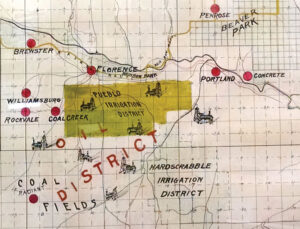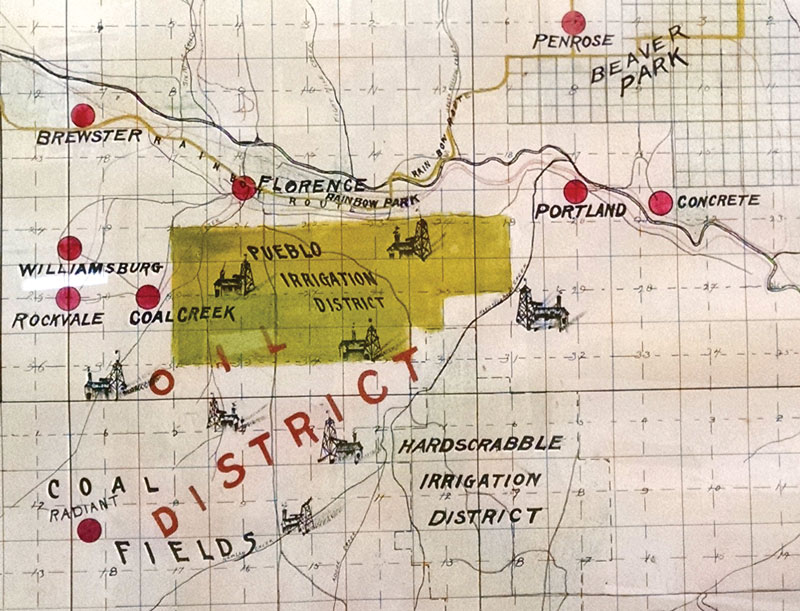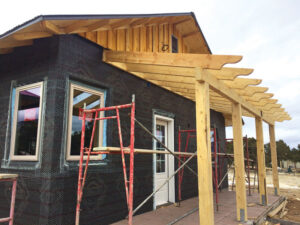By Laura Van Dusen
In 1913, Fremont County nearly split in half.
A group of civic leaders from Florence almost pulled it off. They proposed a bill to the Colorado legislature in January 1913 to split Fremont County in two and develop a new county naming Florence as the seat of government. It might have passed except for some tricky political maneuvering by the Cañon City contingent, who were against the bill.
With Florence as the center of commerce, the new county, which they would call Sunshine, was slated to include surrounding coal towns of Rockvale, Williamsburg and Coal Creek, as well as the rich Florence oil field, the farming/ranching community of Penrose and cement-producing Portland and Concrete. The original plans also included Wetmore, just over the line in Custer County. That area was dropped in the final bill.
Cañon City would be “the only town of any importance in a large territory,” said Florence’s Feb. 6, 1913, Daily Citizen. Remaining with Cañon in Fremont County would be small towns along the Arkansas River, including Wellsville, Howard, Coaldale and Cotopaxi.
It was all because people in Florence “wanted a piece of the pie,” said Marty Lamm, curator of the Florence Pioneer Museum and Research Center, where a large wall map depicts the boundaries of the proposed Sunshine County. Eastern Fremont County produced a large portion of the county wealth, yet “Florence was feeling left out. All accolades were going to Cañon City. It was the gateway to Salida and to the gold fields in Cripple Creek and Leadville,” she said.

The bill was sponsored by the House representatives from Fremont County, Thomas Howells and William Gilbert. From reading newspapers of the day, it is apparent both sides thought the representatives agreed with them.
The Citizen, in a Feb. 12, 1913, reprint from the Denver Express, indicated the name Sunshine was in reference to the “two sunniest men in the legislature, Howells and Gilbert.” At a meeting of the Florence Chamber of Commerce in early February, the two made no promises of the bill passing but said they would “put forth their best efforts in its behalf.” At that meeting, the 200 attendees donated $600 ($14,600 in 2018 dollars) for the cause.
A Cañon City committee hoped to change the legislator’s minds. They spared no expense in hosting a party at Denver’s Brown Palace Hotel with Howells and Gilbert, along with Fremont County state senator Matt Lines, as guests of honor. House and Senate committees on county affairs were also there. While attempting to convince the officials to vote against the split, the best argument, according to the Citizen, was that Cañon City had always been the county seat and “there is no good reason why it should not always so remain.” The legislative members didn’t say what effect the banquet had on their decision. However, they were reportedly highly pleased with the dinner menu.
The reasons Florence wanted to split the county were related to money. Most of the county wealth came from industries on the eastern side of Fremont – where the new county would be – while most of the money was spent in Cañon City. They presented figures showing that, of county expenditures in 1911 and 1912, less than 15 percent of the money was allotted to eastern Fremont. The Florence people also disagreed with the county spending $15,000 ($366,000 in 2018 dollars) on the Cañon City-Colorado Springs highway. They said money shouldn’t be spent on mountain roads that “are of no particular benefit to eastern Fremont County.”
Cañon City had good reasons to oppose the split. They also cited money as a chief reason; their take was that a split would overburden taxpayers in both areas. But they also tried to make the bill seem frivolous by claiming Florence people only wanted the split because they were opposed to traveling the eight or so miles to Cañon City to conduct county business, according to the Feb. 7, 1913, Wet Mountain Tribune.
When the legislature voted on the bill in early March 1913, the proposal was defeated 27 to 30, helped along by the Cañon City contingent who “tricked the Florence people,” said Marty Lamm. An article from the Citizen of March 15, 1913, describes the “trickery” in detail. Condensed for clarity, this is what happened.
After the Colorado House of Representatives Committee on County Lines heard Cañon City’s opposing arguments and Florence’s supporting arguments, they made a decision favoring Florence and voted unanimously in favor of Sunshine County. They prepared the bill to send to the full House. If it passed the House, the next step would be a vote by the State Senate.
The Florence contingent was satisfied; the Cañon City people were not. They lobbied vigorously with misrepresented facts – according to the Citizen story. They cast enough of a doubt that the bill was brought back to the House committee. The Florence delegation heard about it, and convinced the House committee to again send the bill to the entire House. They thought it was a done deal.
But, as it happened, the chairman of the House committee neglected to send the bill to the entire House at that time. The Florence people went back to Florence, the Cañon lobbyists went back to lobbying, and the House committee was soon convinced to send an adverse report on the bill to the full House.
The Florence committee was not notified in advance when the vote would take place in the entire House, so they were absent. Also not notified and absent were eight members of the legislature who were the strongest supporters of the bill. If the eight had been available to vote, and with only four more yes votes needed, it was reported by the Citizen that the bill would have passed in the House.
However, the Citizen reporter remained optimistic. The story ended with, “There is no reason to be discouraged. It is only a question of time until Sunshine County will be established.”
It’s been 106 years since the vote. It is unlikely at this late date that Fremont County will split.
Laura Van Dusen, a new resident of eastern Fremont County, is the author of “Early Days in South Park” and “Historic Tales from Park County.”


